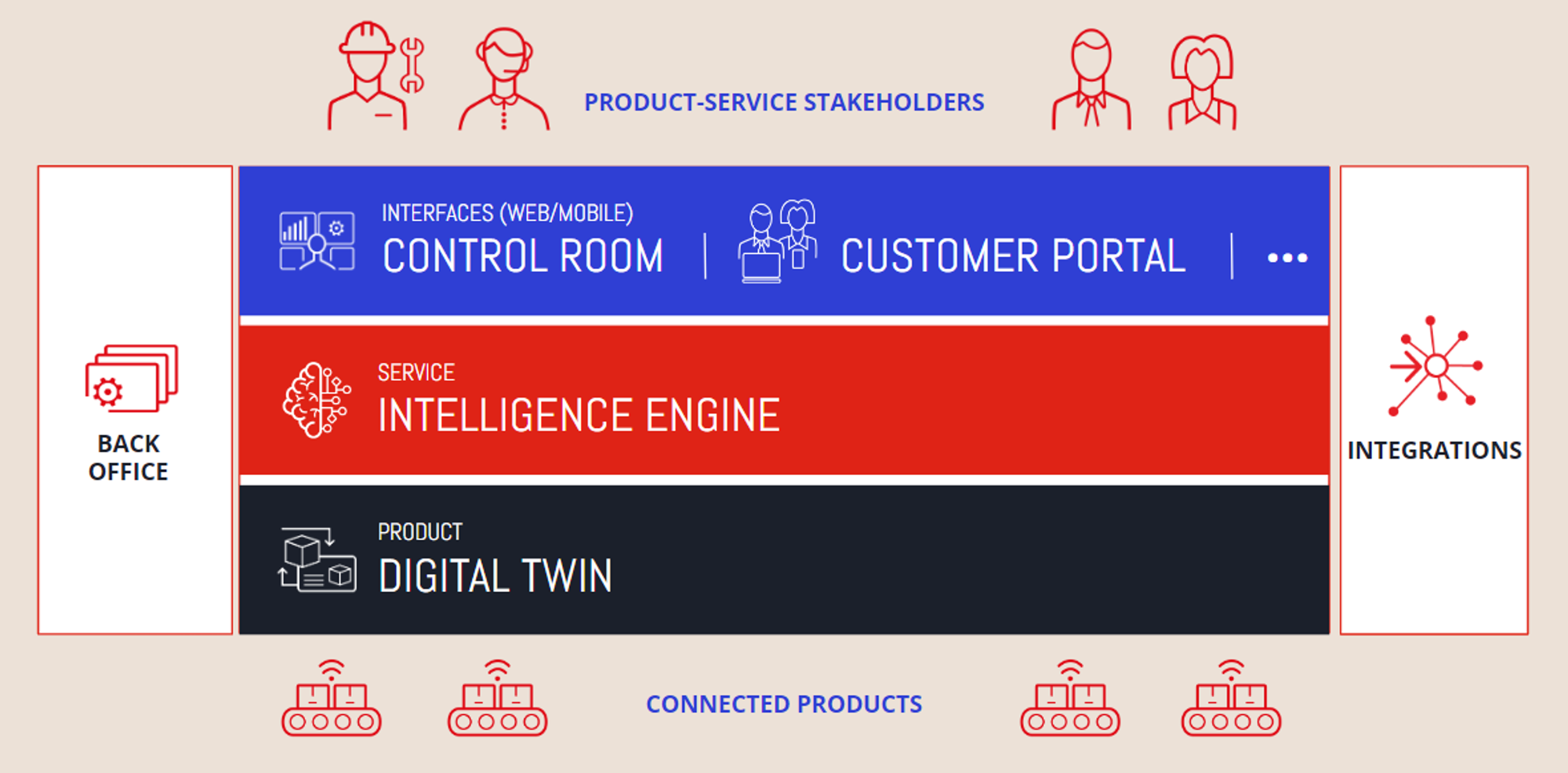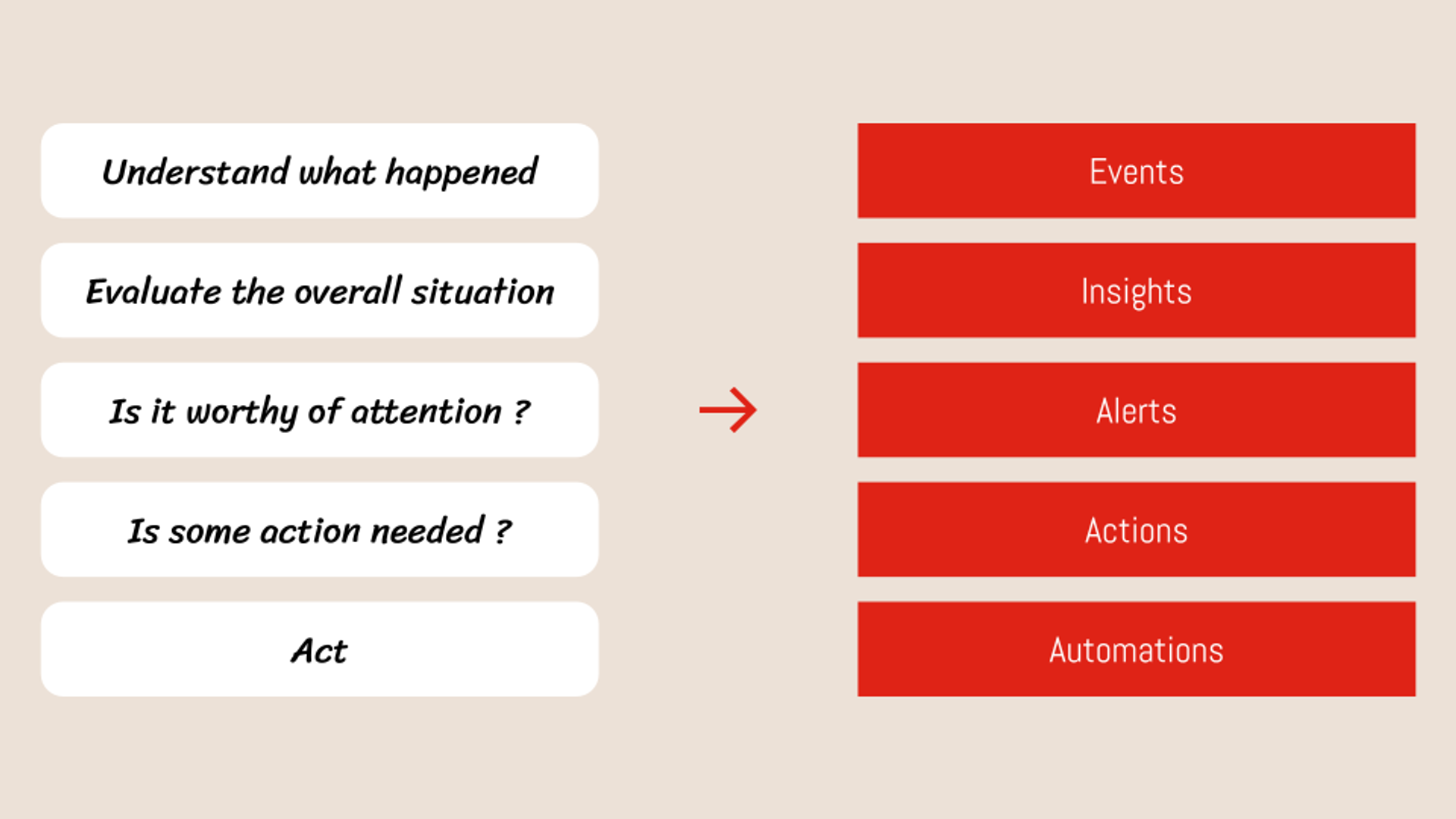The architecture of a Servitly DPS system is divided in 5 elements:

The system interacts at the bottom with your connected products and at the top with your stakeholders.
(Product) Digital Twin
The (Product) Digital Twin layer is responsible for creating and managing the digital copy of each of your connected products. It collects, organizes and stores the raw data sent by them, and also manages the transmission of parameters, commands, and updates.
Connection with products, whether one-way or two-way, is established through the available IoT connectors.
(Service) Intelligence Engine
The (Service) Intelligence Engine is the core section of the DPS system architecture, which adds the intelligence needed to transform data into value and deliver it through a connected service.
The engine runs data processing, scalable advanced analytics and process orchestration functions. It receives raw data as input and generates as output new synthetic information, performance KPIs, alerts, recommendations and prescriptions. It is also capable of performing actions automatically.
It is divided into five layers.
The principle guiding the definition of these layers comes from analyzing the data journey in the user's mind when looking at a dashboard showing raw data:
- Understanding what happened
- Evaluating the overall situation, beyond the single point
- Determining whether it is worthy of attention
- Deciding if some action is needed
- Performing the action
The purpose of the Intelligence Engine is to carry out all these evaluations in place of the user. At each step, the user's effort decreases and the value increases.

The layers are:
- Events layer: it processes the data stream, detects events that occurred, categorizes and stores events in a dedicated data structure for making them available to the higher layers
- Insights layer: it processes raw data and events to compute synthetic information and stores it in a dedicated data structure
- Alerts: it processes events and insights and it highlights, for each specific user role, situations requiring attention
- Actions: based on alerts, this layer provides the user with recommendations or prescriptions that help addressing the highlighted situation
- Automations: based on actions, this layer automatically executes tasks
User Interfaces
The User Interfaces layer is responsible for distributing to all stakeholders any data, information and digital capability managed by the underlying layers.
A key function of this layer is profiling data, information, digital capabilities according to the role of each stakeholder, depending on his jobs, needs and goals.
The 2 fundamental User Interfaces provided by the DPS system are
- the Customer Portal: the user interface addressing your end customers
- the Service Control Room: the user interface addressing your service front-office workforce
Back Office
The Back Office element is responsible for managing all the business entities involved in your product-service systems:
- products
- end customers
- subscriptions and contracts
- partners (distributors, resellers, technical assistance centers) and their relationship with end customers
- your organization + sub organizations
Integrations
The Integrations is responsible for connecting your DPS system within your information systems. For example your:
- FSM
- CRM
- accounting system
